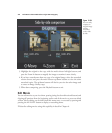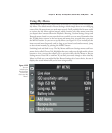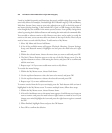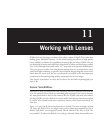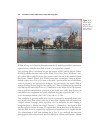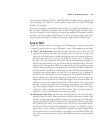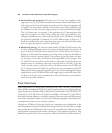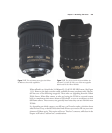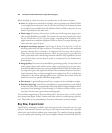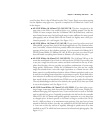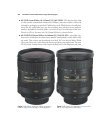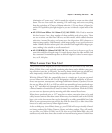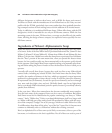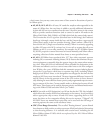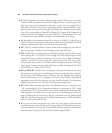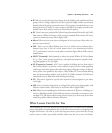When deciding on a first lens, there are several factors you’ll want to consider:
■ Cost. You might have stretched your budget a bit to purchase your Nikon D7000,
so you might want to keep the cost of your first lens fairly low. Fortunately, there
are excellent lenses available that will add from $100 to $300 to the price of your
camera if purchased at the same time.
■ Zoom range. If you have only one lens, you’ll want a fairly long zoom range to pro-
vide as much flexibility as possible. Fortunately, the two most popular basic lenses
for the D7000 have 3X to 5X zoom ranges, extending from moderate wide-
angle/normal out to medium telephoto. Either are fine for everyday shooting, por-
traits, and some types of sports.
■ Adequate maximum aperture. You’ll want an f/stop of at least f/3.5 to f/4 for
shooting under fairly low light conditions. The thing to watch for is the maximum
aperture when the lens is zoomed to its telephoto end. You may end up with no
better than an f/5.6 maximum aperture. That’s not great, but you can often live
with it, particularly with a lens having vibration reduction (VR) capabilities, because
you can often shoot at lower shutter speeds to compensate for the limited maxi-
mum aperture.
■ Image quality. Your starter lens should have good image quality, because that’s one
of the primary factors that will be used to judge your photos. Even at a low price,
several of the different lenses that can be packaged with the D7000 kit include extra-
low dispersion glass and aspherical elements that minimize distortion and chro-
matic aberration; they are sharp enough for most applications. If you read the user
evaluations in the online photography forums, you know that owners of the kit
lenses have been very pleased with their image quality.
■ Size matters. A good walking-around lens is compact in size and light in weight.
■ Fast/close focusing. Your first lens should have a speedy autofocus system (which
is where the Silent Wave motor found in all but the older or bargain basement third-
party lenses is an advantage). Close focusing (to 12 inches or closer) will let you use
your basic lens for some types of macro photography.
You can find comparisons of the lenses discussed in the next section, as well as third-
party lenses from Sigma, Tokina, Tamron, and other vendors, in online groups and web-
sites. I’ll provide my recommendations, but more information is always helpful.
Buy Now, Expand Later
The D7000 is commonly available with several good, basic lenses that can serve you
well as a “walk-around” lens (one you keep on the camera most of the time, especially
when you’re out and about without your camera bag). The number of options available
to you is actually quite amazing, even if your budget is limited to about $100-$350 for
David Busch’s Nikon D7000 Guide to Digital SLR Photography350



